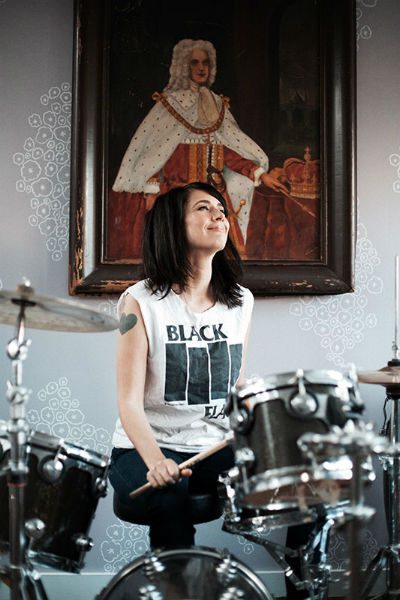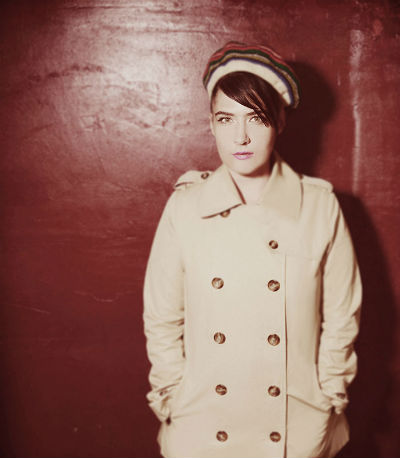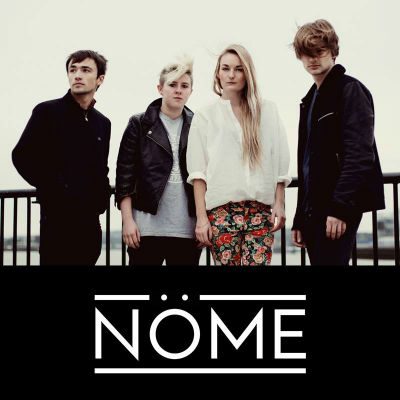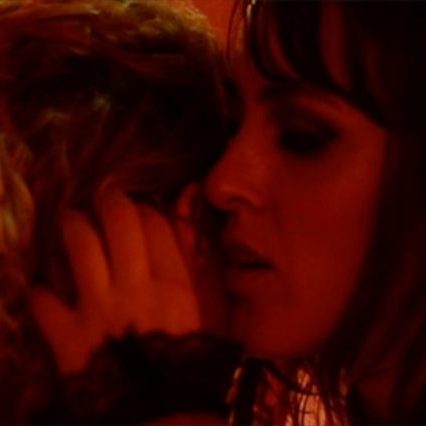
Riot Grrrl & Intersectionality, A Twenty Year Journey
April 9 was Riot Grrrl Day in the city of Boston. And twenty years ago, in Washington, U.S, one of the most important, controversial and brief cultural movements of recent years was falling apart. Meanwhile, in England, a ten-year-old mixed-race girl was having her first period and reverently watching My So-Called Life.
That girl was me and I was being introduced to my first riot grrrl – the charismatic bad girl Rayanne Graff – though I had no idea about punk, zines or feminism at the time. I was born too late and in the wrong place to be a riot grrrl, but I was going to be part of a generation that was both influenced and challenged by the culture in ways I could never have imagined.
Taking inspiration from the feminism and girl punk of the ’70s, with its roots in late ’80s Sassy-girl culture and the art-punk communities of Olympia and Washington D.C, riot grrrl exploded in the early ’90s, only to be a distant memory by the middle of the decade. Frustrated by rampant sexism and apathy in a generation that believed feminism was “so over”, young women began creating zines – small, self-published publications filled with collage, poetry, politics and humour.
Drawing on their liberal arts educations, with the intimate confessional tone of a teen girl diary and the punchy visual language of the advertising that dominated their everyday lives, the creators of zines like Jigsaw (Toby Vail) and Girl Germs (Molly Neuman & Alsion Wolfe) connected young women, giving them a voice and a platform, years before social media. Primarily focused on creating space for women in punk rock subcultures, the radical message of girl power between their xeroxed pages, which stood against patriarchy, sexual abuse and slut shaming, spread across the US, UK and beyond.
There has been renewed interest in riot grrrl recently, stirred up by the acclaim and discussion around Sini Anderson’s portrait of the biggest icon of the scene, Kathleen Hanna. The Punk Singer tells the story of Hanna’s role in creating the riot grrrl scene, as well as delving into her personal life and struggles with Lyme Disease. In the film, we learned that Hanna received some fateful advice from the performance artist Kathy Acker that helped shape the riot grrrl movement. Wanting to encourage Hanna to express herself, but acknowledging the limitations of the spoken word scene, Acker pointed out that there was “much more of a community for music” and Hanna, then a photography student at Evergreen College, Olympia, took heart.
Her work had been censored by the university, she was reeling from the experience of a close friend’s sexual assault and she was keen to find an environment where her voice would not be stifled. With Jigsaw creator Toby Vail she formed Bikini Kill, a feminist girl punk band characterized by didactic lyrics, ironically girlish appearances and a “girls to the front” philosophy. Though the music is fondly remembered by many, the far-reaching influence of the movement was due to its DIY community spirit and a “you can do it” attitude. These were not idolized rock stars on a pedestal, inaccessible and perfect, but normal girls like you and me.
The first riot grrrl meeting was held before the music scene had even developed and these discussion groups, which began to multiply due to the spread of zines calling young women to action, became the blueprint for the content of both riot grrrl zines and lyrics. The original movement may have imploded over media tensions and infighting, but in giving girls permission to express themselves and make their own realities, riot grrrl made ideas previously only known to feminist academics accessible to anyone who could read above 7th Grade level.
For many women who grew up listening to riot grrrl bands, attending their shows and reading their zines, the movement was not only a revolution (girl style NOW, as Bikini Kill would put it) but a revelation. For the first time girls were hearing, from women they related to and respected, that they could have a voice.
The movement has since been rightly criticized for its straight, white, middle-class privilege, but many queer women found acceptance in the lyrics and community that riot grrrl provided. Gina Mamone, CEO of Riot Grrrl Ink, the world’s largest queer music label, and Chair of the White House’s LGBTQIA Arts Advisory Committee, cites a call to action on the back of a Bikini Kill zine as the inspiration for her groundbreaking company, “Everything that RGI has ever made or invested in goes back to Kathleen’s Riot Grrrl Manifesto” Mamone, a self-described tender-hearted genderqueer, grew up in rural Appalachia and describes their public school experience as an “everyday hell”. It wasn’t until Mamone’s time at Marshall College that they heard Ani DiFranco on the college radio station, which laid the foundation for Bikini Kill, L7, Team Dresch and Tribe 8 to come into their life “like fucking Miley Cyrus on a wrecking ball” That Bikini Kill zine prompted Mamone to organize a Take Back the Night rally at their school and the rest, as they say, is history.
“A $1 zine changed my life. […] All I needed was someone to wake me up and give me permission to take up space.”
While some queer women felt that riot grrrl changed their lives, serving as a feminist awakening and reminding them that the traditional, patriarchal world they were born into didn’t actually know any better, others felt excluded, erased or marginalized by the movement. Michelle Gonzales of Spitboy, a punk band that was often misidentified as riot grrrl, was accused of cultural appropriation by a member of the community. “In doing so,” says Gonzales, “she rendered me invisible […] I came up with the title for our 7″ Mi Cuerpo es Mio (My Body is Mine), and I am a Chicana.”
Herein lay one of the key shortcomings of the riot grrrl movement. Created partly in reaction to race riots (Jen Smith told Allison Wolfe in a letter, after witnessing race riots in D.C, “We need a girl riot.”), positioned to critique privilege and corrupt systems of power, riot grrrl sometimes forgot to examine the most important white middle-class privilege of all: it’s own. As Mimi Thi Nguyen wrote in her seminal essay “Race, Riot Grrrl and Revival”, the riot grrrls valued lived experience, which they linked to authenticity and felt was the key to ending oppression, “But how then could experience yield revolutionary knowledge about race, where the dominant experience was whiteness?”
Because of their willingness to engage with politics and theory, the riot grrrls saw themselves as the authority on oppression. Within the small world they inhabited, this was true, but in wider, multicultural contexts, their educations created a kind of blind ignorance that led them to criticize the very people they aimed to fight for. “What was cool about riot grrrl is that many of them were learning a lot of theoretical concepts and applying them to the world and/or teaching them to one another.” says Gonzales, “What wasn’t cool was that way immaturity can cause someone to jump to conclusions and make claims before really examining all the facts.” Kathleen Hanna said last year that she regrets the way women of colour were treated in the community, and the intersectional failings of some of her own drawings and lyrics, which is an important lesson to us all that you may not always get it right, but you can always learn from your mistakes.
In that brief riot grrrl moment, the zines and music created communities rooted in a time and place, where everything was physical and real. It was an IRL time. Growing up in the ’90s, I saw the same old apathy set in after riot grrrl fizzled – though I still wouldn’t discover the movement myself until the decade ended.
The late nineties were dominated by “post-feminist” ideas, as feminism was once again declared “so over”. The focus shifted to individualism, to consumerism, until, due in part to the connective and global qualities of the internet and social media, feminist activism came back. This time, with the added resources of the information age, the message has been able to reach more ears and influence more lives than in those riot grrrl days. Voices that were not invited into the conversation the first time around, including those of women of colour, women of different gender expressions and people throughout the class spectrum were now able to speak their own feminist truth, reflecting the issues that mattered to their communities.

Much of what we fight for today – reproductive rights, an end to rape culture, marriage equality – is rooted in riot grrrl ideas of empowerment, agency and dismantling patriarchal traditions. In 2014, from the grunge fashion prevalent on Pinterest to the radical self-love postings on Tumblr, the influence of riot grrrl can be seen everywhere in our culture. Artists like Beth Ditto, Kate Nash and JD Samson (who formed Le Tigre with Kathleen Hanna in the early noughties, a post-riot-grrrl band that was every bit as much feminist and a hell of a lot more queer) cite riot grrrl as a formative influence.” Although the riot grrrl movement is supposedly over,” says Suzanne Kamata, author of riot grrrl focused novel Screaming Divas, “I think its influence has been widely felt.
When I first came to Japan, the teenage girls that I taught mostly aspired to be wives and mothers. Now, a lot of my girl students are in bands, like Seagull Screaming Kiss Her Kiss Her.” Feminist activist groups like Pussy Riot and Panty Raiders are making music, films and web content that challenges dominant systems of oppression and seeks to dismantle the patriarchy. Zine culture is still alive and well, on Etsy and in local queer/feminist communities. Some of these zines have been created about or in reaction to riot grrrl itself, such as International Girl Gang Underground, “a collection of stories, artwork, and critical work about DIY feminist cultural production and punk rock today, twenty years after the riot grrrl movement, and in the wake of its legacy.” Feminist magazines like ROOKIE, Bust and Bitch keep the riot grrrl spirit alive, celebrating and critiquing it. Parents can now send their kids to Girls Rock Camps, places that aim to help girls “build self-esteem and find their voices” Does – sound familiar?
Two decades on, the world is a very different place than the one the riot grrrl movement started in. We have the internet and smartphones, we have gay marriage and pop stars boldly declaring their feminism. Feminism itself has evolved, becoming much more intersectional, with space being made for queer women and women of colour. The ‘us and them’ rhetoric of black vs white, gay vs straight has slowly been replaced by a number of interweaving and overlapping spectrums. If I were the age I am now in the ’90s, I might have struggled to find a place to belong. I am neither black nor white, gay nor straight and in 2014 that’s a-okay.
We are encouraged to identify as whatever fits us best, all co-existing happily under the amorphous umbrella of queerness. For some though, the very word “queer” is difficult to accept. This word has been known to create tension between the gay/lesbian community, who typically came of age in the ’80s and ’90s, and the young queer community of the current generation.
As Gina Mamone puts it, “ Language can be an issue at times, ‘queer’ is a hard word for some older people. Anyone under 40 is offended if you call them a lesbian and anyone over 50 does not want to be called anything else. [It used to be] the most political thing you could be was a lesbian, then a dyke and now we are on to a buffet of options for you to find where you fit in on the spectrum.
When I do public talks, I often get asked, why the word queer?” This difference of opinion on linguistic preferences gets even more complicated once pronouns are brought up. For older generations, to be seen as neither male nor female and to emphasize this fact with language might seem to reinforce bigoted ideas that those who do not fit into heteronormative moulds are Other.
For this generation, however, choosing to identify as genderqueer and adopt “they” or “ze” pronouns is freeing and affirming. It is all about perspective, which is exactly the point of intersectional feminism. We all have our own journeys and identities, our own truths, a lesson I and those of my generation learned from the victories and errors of those trailblazing riot grrrls.


